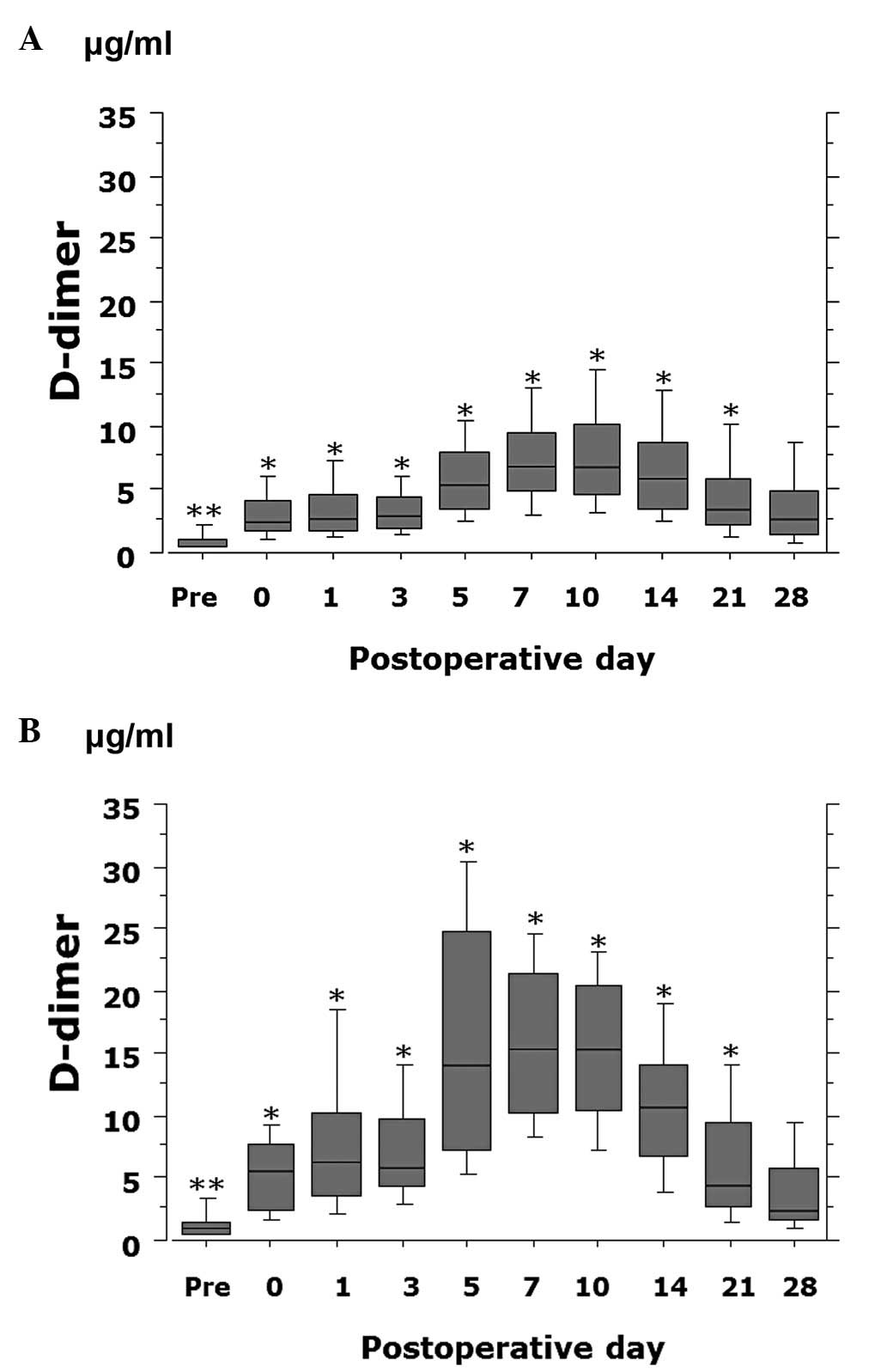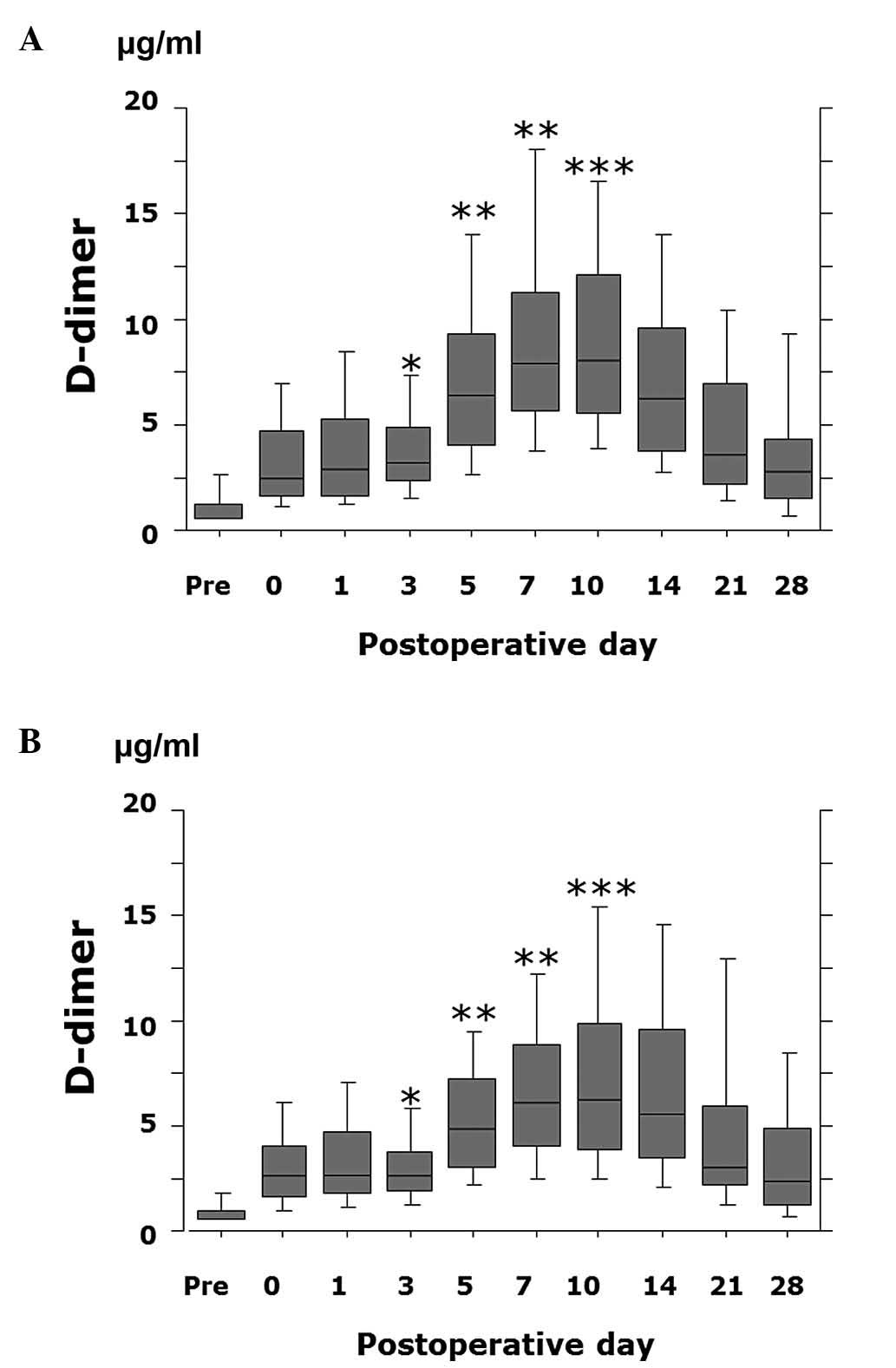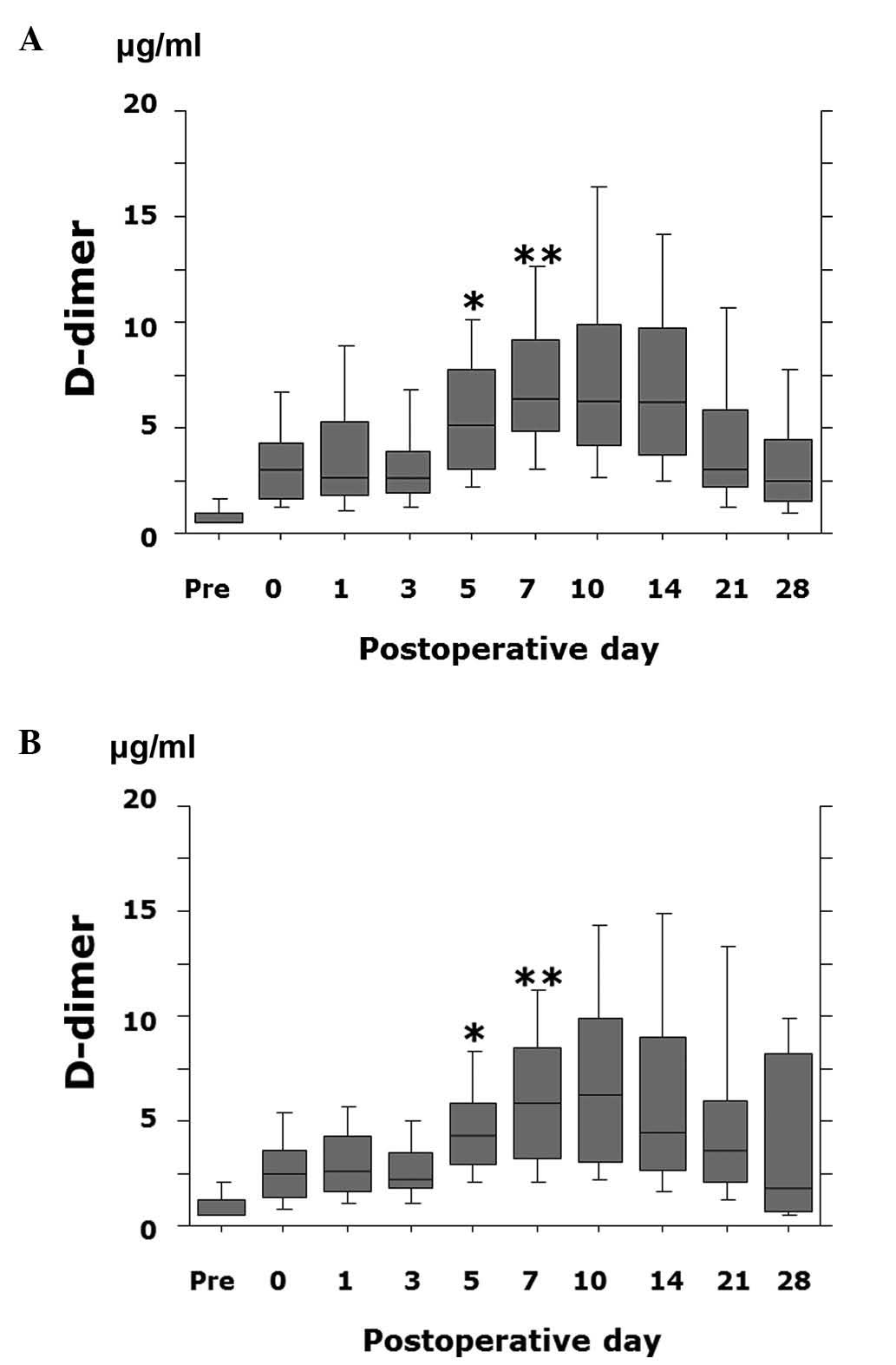Postoperative decreased levels of D‑dimer in patients with gynecologic cancer with enoxaparin and fondaparinux thromboprophylaxis
- Authors:
- Published online on: May 14, 2013 https://doi.org/10.3892/mco.2013.120
- Pages: 737-744
Metrics: Total
Views: 0 (Spandidos Publications: | PMC Statistics: )
Total PDF Downloads: 0 (Spandidos Publications: | PMC Statistics: )
Abstract
The purpose of the present study was to evaluate the effects of enoxaparin (ENO) and fondaparinux (FPX) on postoperative plasma D‑dimer levels and risk factors associated with postoperative venous thromboembolism (VTE) and pulmonary thromboembolism (PTE) in patients with gynecologic cancer. For this study, 434 patients with gynecologic cancer were recruited and a surgical treatment strategy was employed. Plasma D‑dimer levels were measured prior to surgery, as well as on a schedule up to 3 weeks postoperatively and again after day 28. Patients with clinical signs and elevation of the plasma D‑dimer level underwent multidetector row computed tomography. The D‑dimer value was significantly lower in patients with ENO or FPX on postoperative days 3‑10 compared to patients with gynecologic cancers who were not receiving ENO or FPX. The D‑dimer value was significantly lower in patients with FPX compared to patients with ENO on postoperative days 5‑7. The D‑dimer value on postoperative day 3, the use of erythropoiesis‑stimulating agents (ESAs), advancing age and non‑O blood group were independent risk factors for postoperative VTE. The D‑dimer value on postoperative day 3 and the use of ESAs were independent risk factors for postoperative PTE. The postoperative D‑dimer value was significantly lower in patients with gynecologic cancer who were administered ENO or FPX compared to patients were not administered either ENO or FPX. The use of ESAs and high plasma D‑dimer levels on postoperative day 3 were independent risk factors for postoperative VTE and PTE.












